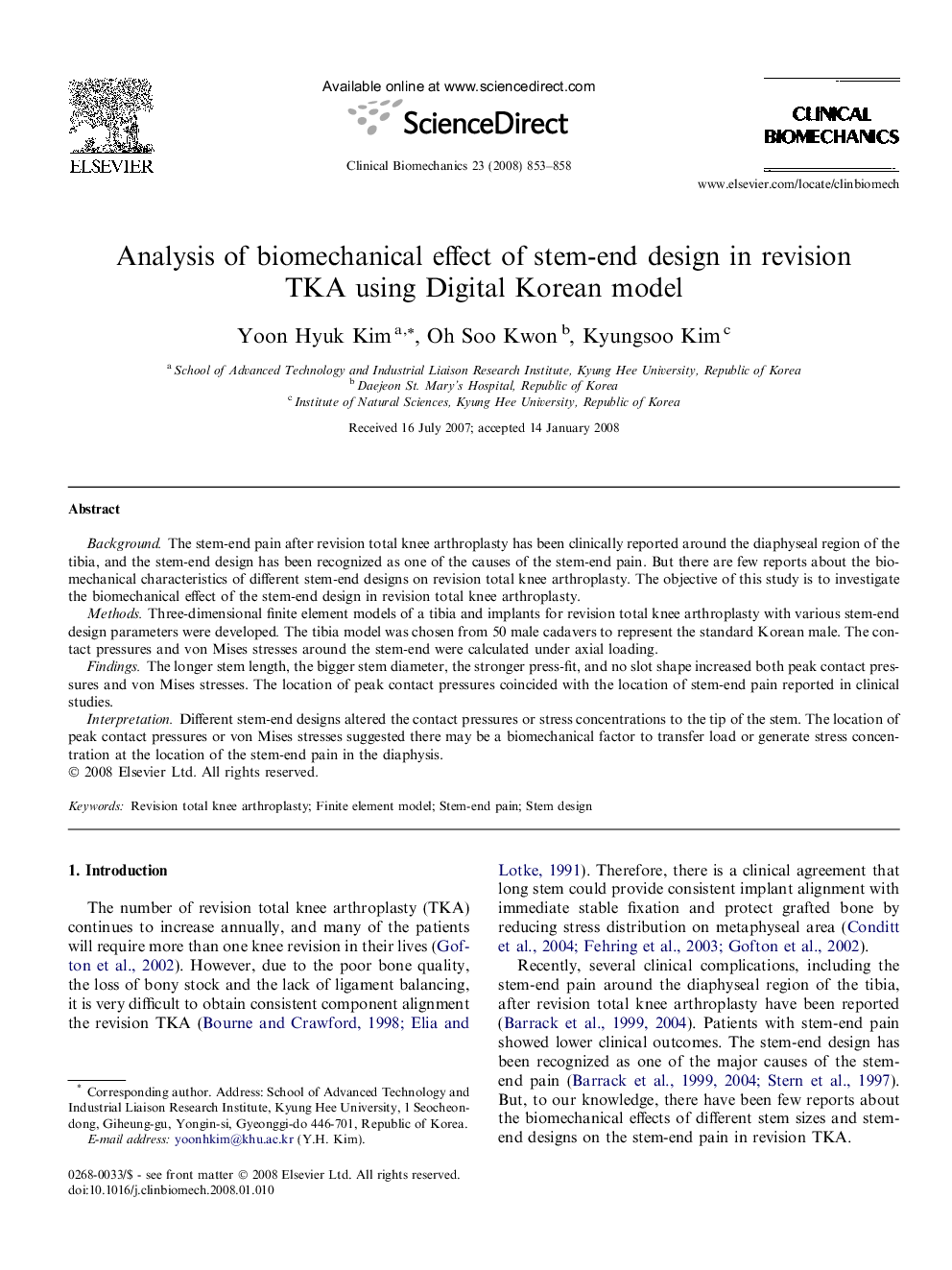| Article ID | Journal | Published Year | Pages | File Type |
|---|---|---|---|---|
| 4051381 | Clinical Biomechanics | 2008 | 6 Pages |
BackgroundThe stem-end pain after revision total knee arthroplasty has been clinically reported around the diaphyseal region of the tibia, and the stem-end design has been recognized as one of the causes of the stem-end pain. But there are few reports about the biomechanical characteristics of different stem-end designs on revision total knee arthroplasty. The objective of this study is to investigate the biomechanical effect of the stem-end design in revision total knee arthroplasty.MethodsThree-dimensional finite element models of a tibia and implants for revision total knee arthroplasty with various stem-end design parameters were developed. The tibia model was chosen from 50 male cadavers to represent the standard Korean male. The contact pressures and von Mises stresses around the stem-end were calculated under axial loading.FindingsThe longer stem length, the bigger stem diameter, the stronger press-fit, and no slot shape increased both peak contact pressures and von Mises stresses. The location of peak contact pressures coincided with the location of stem-end pain reported in clinical studies.InterpretationDifferent stem-end designs altered the contact pressures or stress concentrations to the tip of the stem. The location of peak contact pressures or von Mises stresses suggested there may be a biomechanical factor to transfer load or generate stress concentration at the location of the stem-end pain in the diaphysis.
